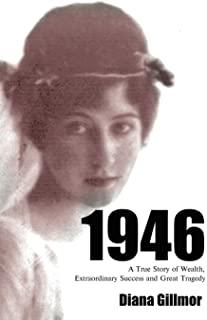
Gillmor, Diana
Only a few anecdotes about the author's grandparents remained after their deaths more than half a century ago. Research of nearly a decade led her to some startling information and the amazing story of the couple's lives. The author also discovered her grandfather's remarkable place in history and that neither Reg or Edwina were ordinary people. From an early age, Edwina had a decidedly European upbringing, highlighted by a convent education and life in several foreign cities. She and her sisters also enjoyed the upper-crust life of Mrs. Astor's New York Society and the "four hundred." By contrast, the early life of her husband, Reg, was characterized by being the son of a Civil War veteran turned preacher with eight children in a small mid-western town. Fortune smiled on Reg at the age of sixteen, however, when he became the youngest man to enter and graduate from the United States Naval Academy. His succeeding service in the US Navy brought him into contact with a prominent American inventor. A short time later, he joined the gentleman's newly formed company as the second of just three employees. In a few short years, his intelligence and drive propelled both him and the company into the world's undisputed leader in the invention and manufacture of navigation instruments, virtually ending the age of the compass. The company's weapons guidance systems were also an extreme advantage during wartime, and their aircraft instruments made flight possible and greatly facilitated the possible uses of airplanes, ships, submarines and eventually spacecraft. The products invented and developed by this company are still vital to the performance of all these vehicles. 1946 is a story about these two people. But it also chronicles the rapid transformation of a very small company into the ninth largest in America. Along the way, the early history of flight and advances in associated technology is tracked during the first half of the twentieth century. The continual development of the weaponry of war, through two world wars, and the ever increasing devastation these advances caused to humanity is also chronicled. The book also reveals the devastating and highly unusual events that eventually led to the untimely destruction of a family, one that seemed to have had it all. It is easy to imagine that the combination of the events portrayed in 1946 is the result of the writer's clever imagination; they are not. This book is a work of narrative nonfiction. It is also a tribute to two extraordinary people, recognition of their remarkable success and homage to their tragic suffering.







